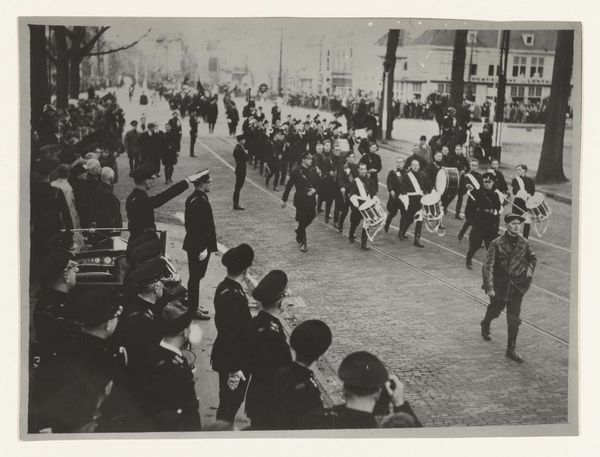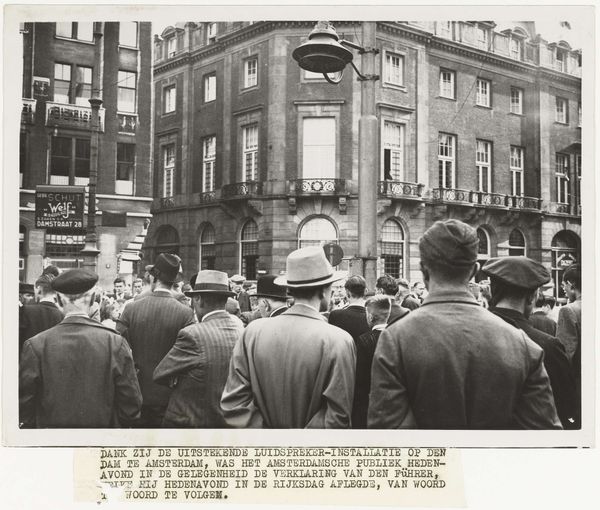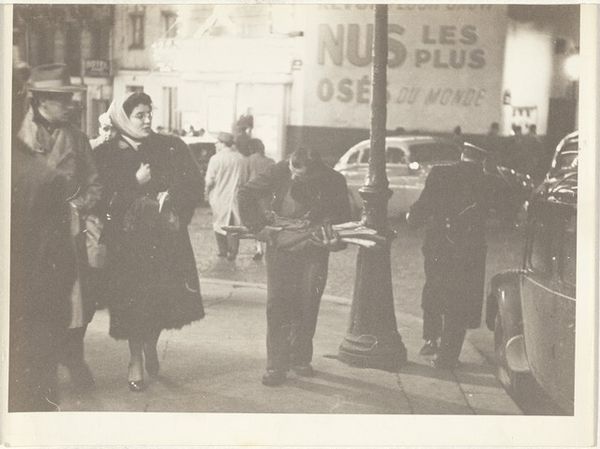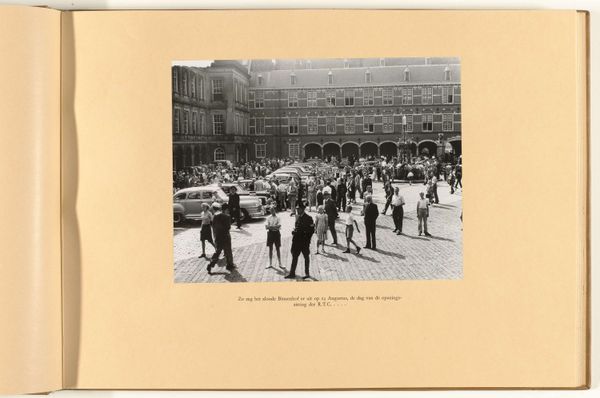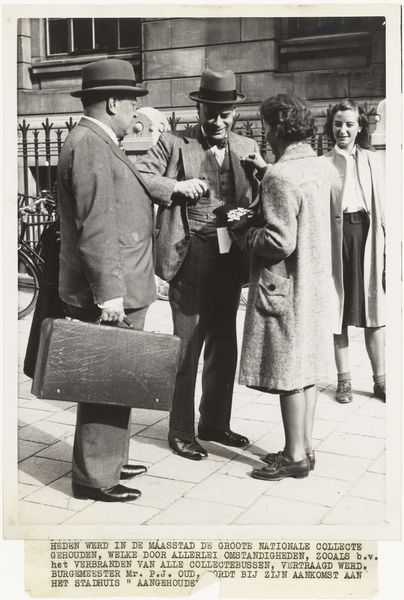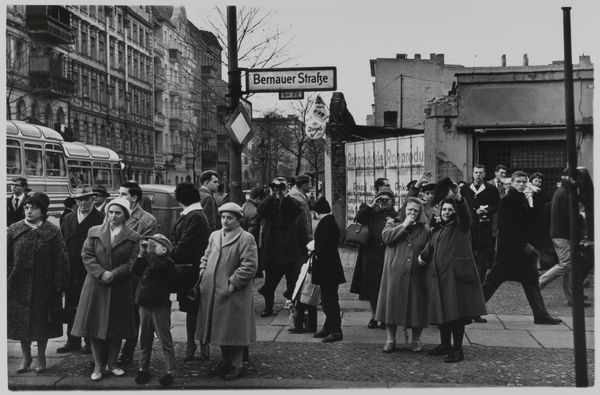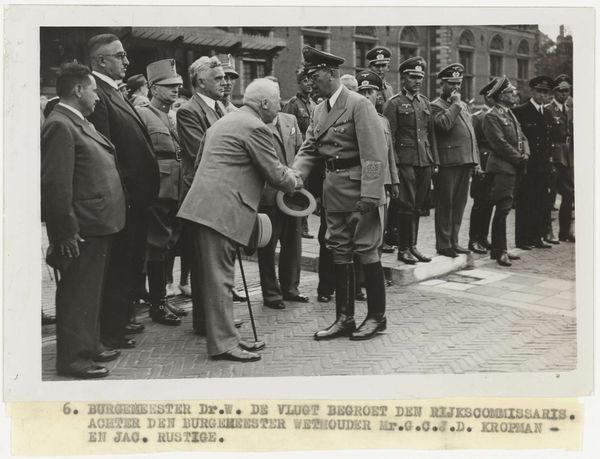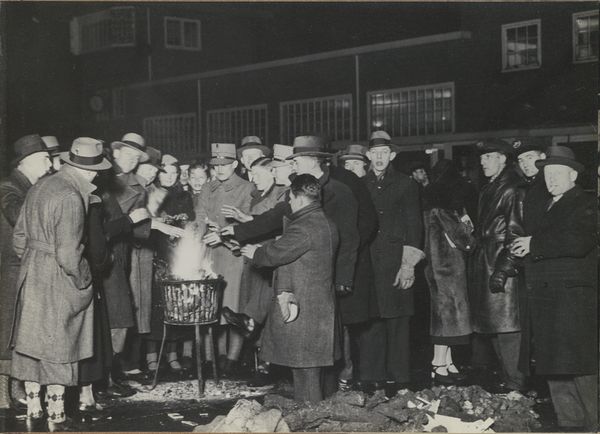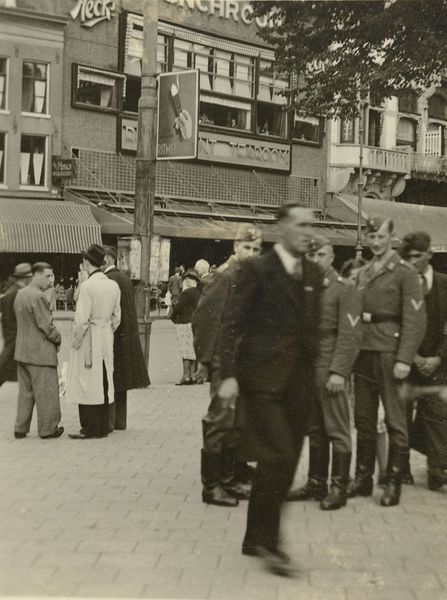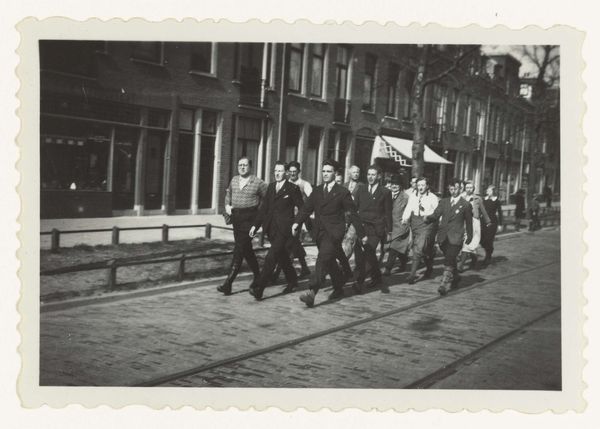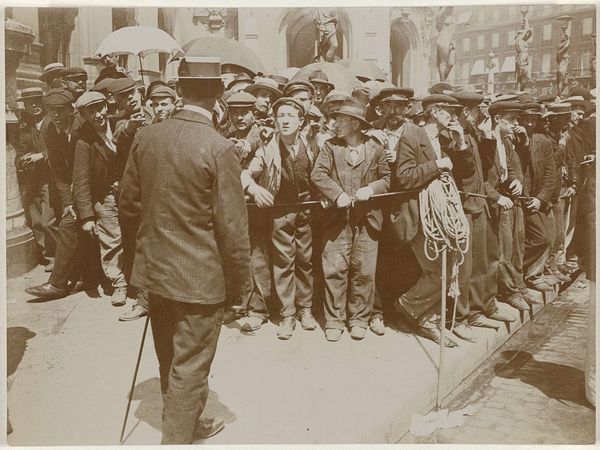
print, photography, gelatin-silver-print
# print
#
landscape
#
archive photography
#
street-photography
#
photography
#
historical photography
#
soldier
#
gelatin-silver-print
#
history-painting
#
realism
Copyright: Rijks Museum: Open Domain
Curator: It's a striking gelatin-silver print, isn't it? Titled "Eerste oorlogsdag bij het Centraal Station," which translates to "First Day of War at Central Station," likely taken sometime between 1940 and 1945. Editor: Yes, it’s… heavy. Everyone looks so uncertain, except for the soldier. I wonder, what is this work really saying? Curator: Notice the title and what’s stated in the picture’s descriptive insert - "Soldiers urge citizens to go home quietly". But what can the materials themselves tell us? Think about the accessibility of photography at this time. The relative ease of production, compared to painting, makes it a powerful tool for documenting lived experience. Who had access to cameras? Who controlled the narrative, and whose story might be missing? Editor: So, you are saying that photographic prints as a medium may seem to objectively record what’s there but are the end product of social production. That makes a lot of sense. So who took this photograph for instance, matters to understanding what we're seeing. Curator: Precisely. We need to consider the context: the Nazi occupation. The very act of documenting this event, producing and distributing this print, becomes an act embedded within the power structures of that era. Also consider the use of Gelatin-silver which was very accessible, indicating documentation over pure aesthetic value. Editor: That gives me a new perspective. It's not just a snapshot; it's a manufactured record of a very specific moment, made possible and shaped by the war itself. I hadn’t thought about the making of it so much as what was recorded, you know? Curator: The consumption, distribution and reading of an artwork are equally important as what's visually contained in its frame. Editor: Thanks; I will rethink historical photography now as documentation by social construction rather than mere mechanical reproduction of life at some point in time.
Comments
No comments
Be the first to comment and join the conversation on the ultimate creative platform.
